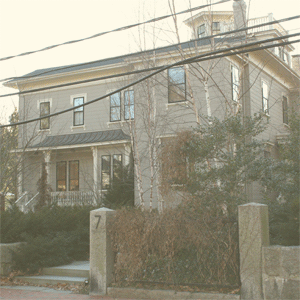 |
|||

|
Edward L. Bernays is known as “the father of spin.” Most people have never heard of him, yet Life magazine named him one of the most influential people of the twentieth century. His client list included the major corporations of his era, including American Tobacco, General Electric, CBS, Dodge Motor Company, and United Fruit, as well as three presidential administrations. He created an entire genre combining business, marketing, and psychology and fought until the end of his life trying to professionalize, standardize, and perhaps control his creation for the future. Edward Bernays was the inventor of public relations. Bernays, the nephew of Sigmund Freud, was born in Vienna, Austria but grew up in New York City. A bright student, he enrolled in Cornell University at the age of 16 to study agriculture. His first job, however, was in journalism and after the outbreak of World War I he volunteered to work for the the government's Committee on Public Information. He was put in charge of a number of “propaganda projects” centered on generating support for America's involvement in the war. His contribution was so influential, he was invited to accompany Woodrow Wilson to the Paris peace conference in 1918. 1 Intrigued by what he saw, and no doubt influenced by the work of his uncle, Bernays developed his own “science” of what he termed “public relations.” Applying what he had learned in politics to the public sphere, he believed that he could link mass-produced goods to people's unconscious desires. In essence, he worked to shift public perception from the “wanting” of goods to the “needing” of goods, and associating those goods (those ones he was hired to promote) with deep, powerful, emotional responses that encouraged their consumption. Bernays opened his own firm in New York in 1919, quickly attracting a large number of major clients and proving that his new ideas were exactly what major companies were looking for. Bernays had a long and storied career, including some of the following well-known campaigns:
Bernays wrote his first of four books, Crystallizing Public Opinion, in 1923, the same year he became the first instructor on the subject when he taught a course at New York University. By the time of the publication of his second book, Propaganda (1928), he had established the philosophy of public relations, helping to establish a consumer-based culture which continues to affect the world today. In the 1940s and 50s Bernays shifted to the uses of mass media, and how visual symbols could become instruments for a new concept he had developed, also the title of his next book, The Engineering of Consent, (1955). His final book, written in 1965 was a reflection on his career: Biography of an Idea: Memoirs of a Public Relations Counsel. Bernays was not an egalitarian thinker and some of his principles show a strong point of view. In Crystalling Public Opinion he wrote, “This is an age of mass production. In the mass production of materials a broad technique has been developed and applied to their distribution. In this age, too, there must be a technique for the mass distribution of ideas.” In his next book, Bernays goes on to say, “The conscious and intelligent manipulation of the organized habits and opinions of the masses is an important element in democratic society. Those who manipulate this unseen mechanism of society constitute an invisible government which is the true ruling power of our country.” 5 In The Engineering of Consent, he wrote, “the engineering of consent is the very essence of the democratic process, the freedom to persuade and suggest.” Perhaps this is not what people want to hear, but this is the way Bernays influenced the world to operate. Bernays' career, and later his legacy, have not been shielded from the criticisms of those who have likened his work to, most innocently, mind-controlling businessmen, and, at worst, to the propaganda of the National Socialist regime in Germany. It his memoirs Bernays wrote that he was shocked to discovered that Nazi Germany's Minister of Propaganda, Joseph Goebbels, kept some of Bernays' work in his personal library. While there are clearly some controversial elements to Bernays' work, Bernays claimed that he was working with propaganda before it obtained its negative connotation during the Second World War, due to its Nazi association. While his thinking may not be palatable to some, Bernays saw public relations as more an understanding of the facts of human nature rather than a manipulation of it. Nevertheless, Bernays' legacy remains controversial. The most notable recent assault came from the BBC documentary The Century of the Self, in 2002, in which he is described as “undemocratic.” After nominally retiring from his work in the 1960s, Bernays and his wife, who served as his public relations partner during their careers, decided to look for a place to retire to. After researching several cities, they decided on Cambridge because of its “cultural and educational possibilities with a tradition of intellectual stimulation, and a feeling of Europe.” 6 The innovative nature of Cambridge lured them to 7 Lowell Street, but Bernays did not stop working. He was an integral member of the group which fought to save the Sycamore trees on Memorial Drive from being sacrificed to a highway underpass. Various other PR projects gained his attention, but Bernays' major effort during his final years was to professionalize the field that he had created. Speaking on the future of public relations to a Journalism and Mass Communication Convention Bernays explained that “public relations has suffered from the public's distrust,” and that “I believe that licensing and registration is mandatory if we are to aspire to transform public relations into a respected profession.” 7 He championed Massachusetts Senate Bill #374 in 1992, at the age of 100. This bill was intended to improve the field of public relations through voluntary registration, elevating the practitioners of PR to the professional status of doctors, lawyers, architects and others in specialized fields. A licensing exam would allow those who passed to used a specialized legal title to denote mastery and certain body of knowledge of their craft, as well as adherence to a code of ethics. On a practical level, the legislation would force public relations curricula at universities to adhere to certain criteria set by a state board and examiners. 8 In the same speech in support of the bill Bernays explains, “Because the words 'public relations' are presently in the public domain, anyone, regardless of education, experience, character or conscience can call him or herself a public relations practitioner. This is the primary reason that PR suffers from an unfortunate number of charlatans and incompetents within its ranks.” 9 Despite his best efforts, the bill was voted down, and his goals have yet to be met. During his life, Bernays was an engaging, important, and often controversial figure. He is considered one of the most influential people of the 20th century, though, he remains largely unknown. He chose to spend his final days in Cambridge—still working, writing his life story in his memoir, and fighting for the field to which he devoted his 103-year long life. Perhaps it is best to leave the conclusions on Edward Bernays to his biographer, Larry Tye: “He was the profession’s first philosopher and intellectual. He saw the big picture when few others did. He demonstrated for future generations of PR people how powerful their profession could be in shaping America’s economic, political, and cultural life. At work, he thought bigger and bolder than anyone had before.”10 |
||

